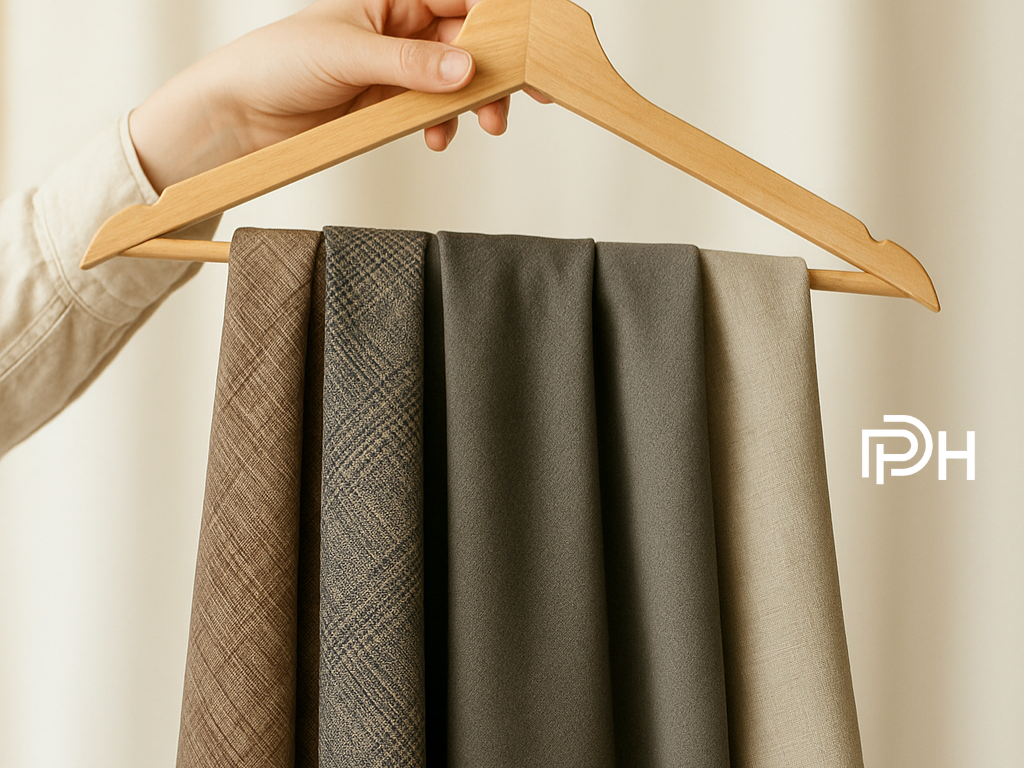Shoppers want clothes that feel good, last longer, and do less harm. That is where eco friendly textiles step in. They help brands cut waste and lower their footprint, while giving you breathable, comfy fabrics to wear every day.
More labels now use natural fibres and smarter blends. You see the difference in softness, strength, and how well pieces handle heat and humidity. With simple care, these fabrics hold their shape and colour for years. So you buy less and wear more. That is better for your wardrobe and the planet.
Everyday benefits of eco friendly textiles
Comfort you can feel
Clothes made from eco friendly textiles breathe well and wick moisture away. You stay cool in summer and cosy in winter. They are gentle on skin and easy to wear all day.
How environmentally friendly textiles reduce impact
environmentally friendly textiles use fewer chemicals, less water, and smarter farming or recycling methods. They support healthier soils and safer workplaces across the supply chain.
Simple reasons people switch
-
Softer feel and better airflow
-
Stronger fibres that last longer
-
Lower environmental impact from farm to fabric
hemp based fabric in modern wardrobes
hemp based fabric is having a real moment. It is tough, breathable, and softens with each wash. Because hemp grows fast and needs less water, it fits the goals of eco friendly textiles without fuss. In daily wear, hemp tees and shirts feel light and fresh. The fabric resists odours, so you can wear items more between washes. That saves water and keeps clothes in shape for longer. Hemp denim and blends also hold their form, which means knees and elbows do not bag out as quickly.
For style, hemp pairs well with cotton and recycled fibres. You get a clean drape and an easy fit that suits casual days, office basics, and travel. With simple care, hemp based fabric becomes softer while staying strong, so it earns a long-term spot in your wardrobe.
Expanding choices with sustainable fabrics textiles

Popular options to try
sustainable fabrics textiles cover a wide range. Organic cotton cuts pesticide use. Tencel and modal come from managed wood sources and feel silky. Recycled polyester gives new life to existing materials and dries fast for active wear.
Where sustainable textile materials fit
Look for sustainable textile materials in everyday staples. Think tees, shirts, chinos, dresses, socks, and underwear. You can also find them in gym gear and outer layers. These fabrics balance comfort with durability, so you keep pieces for many seasons.
How to pick what suits you
Start with what you wear most. Swap a few basics to sustainable fabrics textiles and notice the difference in comfort and care. Check labels, feel the fabric, and choose weights that suit your climate and routine. Small changes add up quickly when you wear those items every week.
The Role of Sustainable Textile Materials in Fashion Innovation
Fashion is not just about style anymore. It’s also about responsibility. That’s why sustainable textile materials are becoming central to how brands design their collections. These fibres are developed to meet the needs of comfort and creativity, without leaving a heavy mark on the environment.
Today’s designers are blending natural and recycled fibres to create clothes that look and feel modern. From performance wear to casual staples, the use of sustainable textile materials shows that fashion can be both stylish and responsible. The exciting part is how these textiles push boundaries, giving us fabrics that are softer, stronger, and longer lasting.
How to Spot Genuine Eco Friendly Textiles When Shopping
Labels and certifications to trust
When shopping, it helps to know how to identify authentic eco friendly textiles. Look for certifications such as:
-
GOTS (Global Organic Textile Standard)
-
OEKO-TEX Standard 100
-
FSC for responsibly sourced fibres
These give you confidence that the fabrics are truly environmentally friendly textiles and not just clever marketing.
Simple checks for consumers
Apart from labels, you can do a quick feel test. hemp based fabric and organic cotton often feel breathable and natural. Recycled blends usually mention their fibre content clearly on the tag. If a garment avoids details, it’s worth being cautious.
By paying attention, you not only choose better quality but also avoid greenwashing that can mislead buyers.
Print Holdings: Leading the Way with Eco Friendly Textiles
For anyone looking to explore eco friendly textiles in Australia, Print Holdings Pty Ltd is a trusted supplier. The company goes beyond standard print services by offering next-generation sustainable fabrics textiles and hemp based fabric options.
Their range includes:
-
Sustainable fabrics textiles for clothing and accessories
-
Environmentally friendly textiles that reduce waste and emissions
-
Hemp based fabric that balances comfort with durability
By working with Print Holdings, designers and businesses can access materials that are not only functional but also aligned with today’s demand for greener living. Their focus on sustainable textile materials makes them a valuable partner for brands seeking scale and responsibility.
Conclusion: Building a Wardrobe with Eco Friendly Textiles
Making the switch to eco friendly textiles is easier than ever. With options like hemp based fabric, organic cotton, and recycled blends, you can enjoy clothes that are soft, durable, and environmentally conscious. These textiles are proof that fashion can look good and do good at the same time.
By choosing certified products and supporting companies like Print Holdings, you are helping shape a future where style and sustainability walk hand in hand. A wardrobe built with sustainable fabrics textiles isn’t just about looking sharp—it’s about making choices that last longer and give back to the planet.

